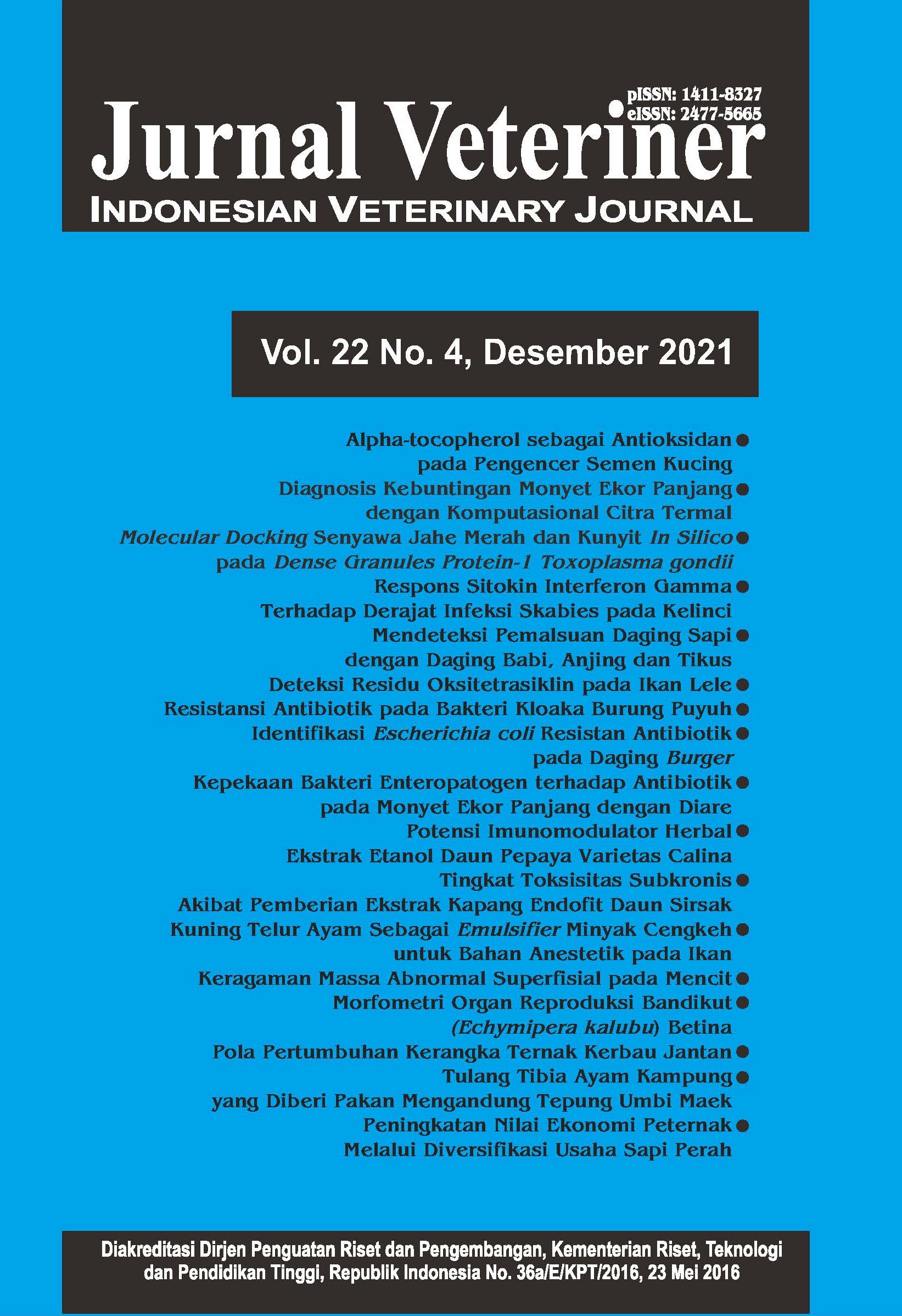Refinement of methodology and deep computational analysis of the thermal images for better estimates of pregnancy diagnosis in cynomolgus monkeys (Macaca fascicularis)
Abstract
The current use of thermal imaging has been documented in wild animals due to the benefit for having real-time results with less or almost no restrain or invasive methods required - and this is significant for better well-being. This paper will explore the thermal imaging studies as a part of employing non-invasive methods in evaluating physiological function, in particular with refinement of the methods, followed by further computational analysis of the images to ensure the validity of the methods as predictive tools for pregnancy diagnosis. We conducted refinements in thermal imaging methods and computational analysis of deep learning for pregnancy diagnosis of cynomolgus monkeys (Macaca fascicularis) at breeding facility of The Primate Research Center, LPPM IPB University. Subjects were already identified by ultrasound as pregnant in 80, 120 and 130 days. Thermal images along with the temperature data were obtained from FLIR ONE camera in sedated animals with dorso-ventral recumbence. The temperature data were analyzed with linear regression to correlate the skin temperature and the days of pregnancy to make a prediction of pregnancy days based on temperature data. There is a positive correlation of the temperature to the pregnancy days with a function of temperature to days. Further computational analysis of the thermal image, the results showed that the refined methods and the computational analysis brought better interpretation to evaluate health and reproductive status, in particular with the pregnancy diagnosis.



















